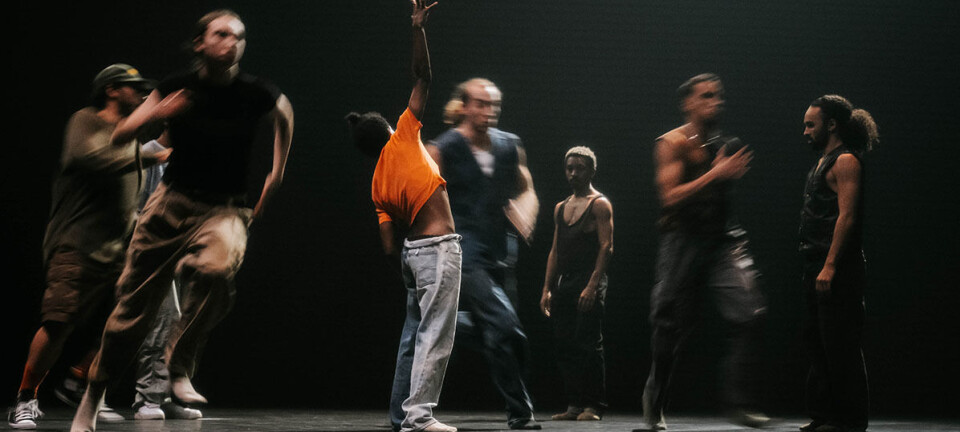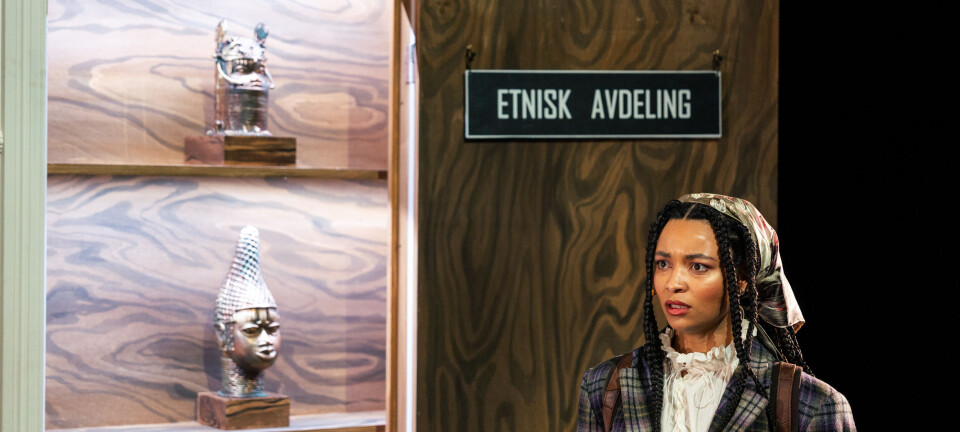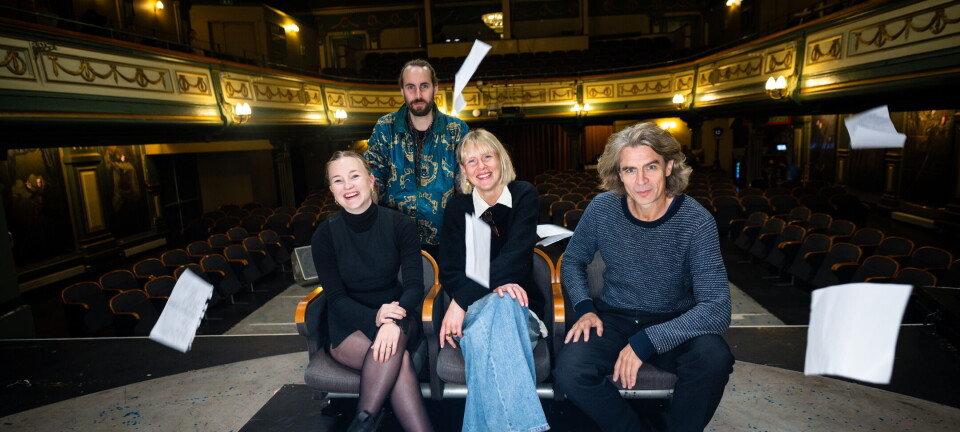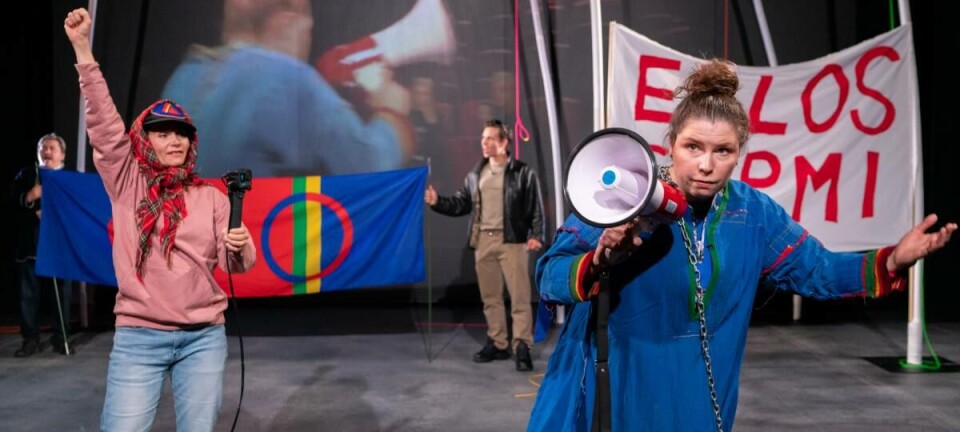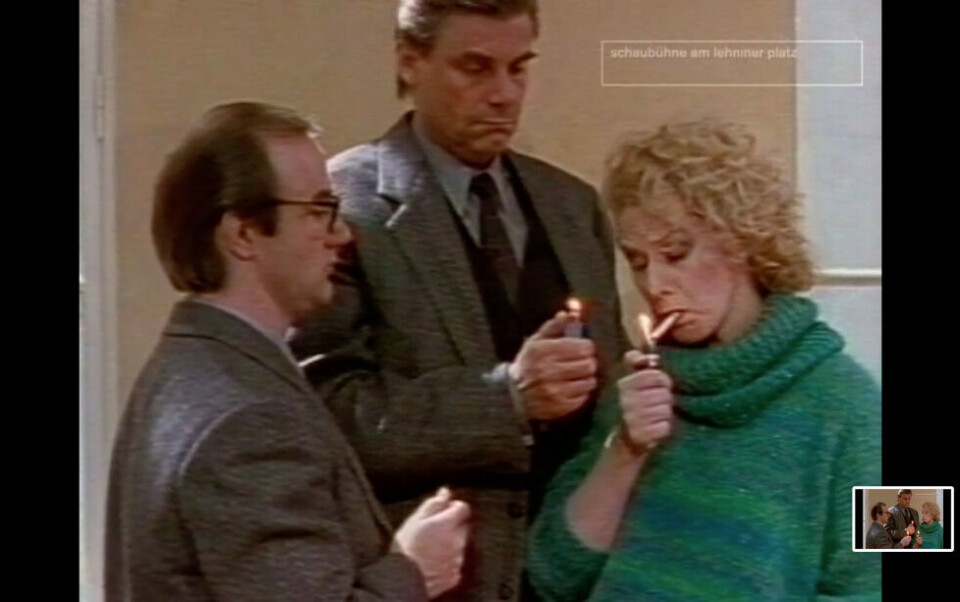
«Die Zeit und das Zimmer» by Botho Strauss
Botho Strauss takes emotional pain in vain as a model of confusion and disillusion and makes again a longing woman the centre of his play. Luc Bondy’s staging of «Die Zeit und das Zimmer» premiered 8 Feb 1989 at Schaubühne, and will be streamed from Schaubühne on April 15th.
Julius and Olaf make an odd couple of flaneurs at rest in their room, one sitting by the window, the other sitting with his chair facing the inside, changing each other’s positions with the change of weather. At the beginning Julius reports what he sees in the street, and this opening monologue juggles some glimpses of 1980s Berlin with remarkable signs of ‘in-between-ness’: Christmas trees in the slushy streets of a February day, the old tenement houses being renovated by apparently unemployed people with an attitude between self-appointed caretaker and mysteriously growing ownership - quite what you could find in 1980s squatters’ Kreuzberg. One passer-by girl is described as «flipping-through-magazines»and «TV-screen-pale», representing the Straussian topic of mass-media mediocrity as cultural critique. Julius and Olaf are, however, no ideologues. They are observers of passers-by and time passing by. Their ambition is perfect stagnation: «We don’t want anything, and we have no plans.»
Marie Stauber
Upon her mentioning and as if overheard by herself, the TV-screen pale intrudes the room. Marie Steuber protesting against her characterization is followed by a number of mysterious strangers: a man in a coat, a woman called sleep-woman and another woman named the impatient, and a man without a clock. They all recollect fragments of incidents past that may or may not have a connection with somewhat impossible love relationships, as they seem to be part of Marie Steuber’s complex personality.
The second part repeats Marie’s advent, now with two suitcases. The room has become even more mysterious when a column next to the door speaks with a human voice, while the story of Marie’s mismatched relationship with a business man is followed by her appearance as a cold boss ruling over servile employees. As in Groß und klein ten years before, Strauss takes emotional pain in vain as a model of confusion and disillusion and makes again a longing woman the centre of his play. The odd couple is invaded by life stories they don’t really need to understand in their room of passing time – and whose incoherent narration makes hardly any sense.
Blending of genres
Luc Bondy’s staging is a puzzling blending of genres: The odd couple comedy along with the dream-play (no question, with echoes from Strindberg), the existential drama of Marie’s despair with the incredible lightness of boulevard entertainment, and all these in the setting of a more or less real Berlin atmosphere (which is not necessarily to be recognized in the fine and lofty design by Richard Preduzzi). Libgart Schwarz (by the way, Peter Handke’s first wife, speaking of relationships) impersonates a Marie Steuber in full size and with bursting expressions. Udo Samel (Olaf) and Peter Simonischek (Julius) are legends from the end of Schaubühne’s Peter Stein era – Simonischek being today the most celebrated actor in Austria next to Klaus Maria Brandauer and Christoph Waltz. See him that young and promising!
From today’s perspective this third Botho Strauss play in Schaubühne’s selection makes not only the middle part between Groß und klein (1978) and Schlusschor (1991) but it also marks a kind of Zeitgeist threshold between the problematic past and, note the year of its first production!, changes in the near future. Olaf and Julius’s quiet contemplations will be not only disturbed by surrealistic intruders from the street but by great changes in reality altogether. Meaning not only the fall of the Berlin wall but all the more the earthquakes of neoliberal capitalism that will have fundamentally reshaped (or even erased) their comfortable ‘Time-Room’ by the end of the 1990s.

